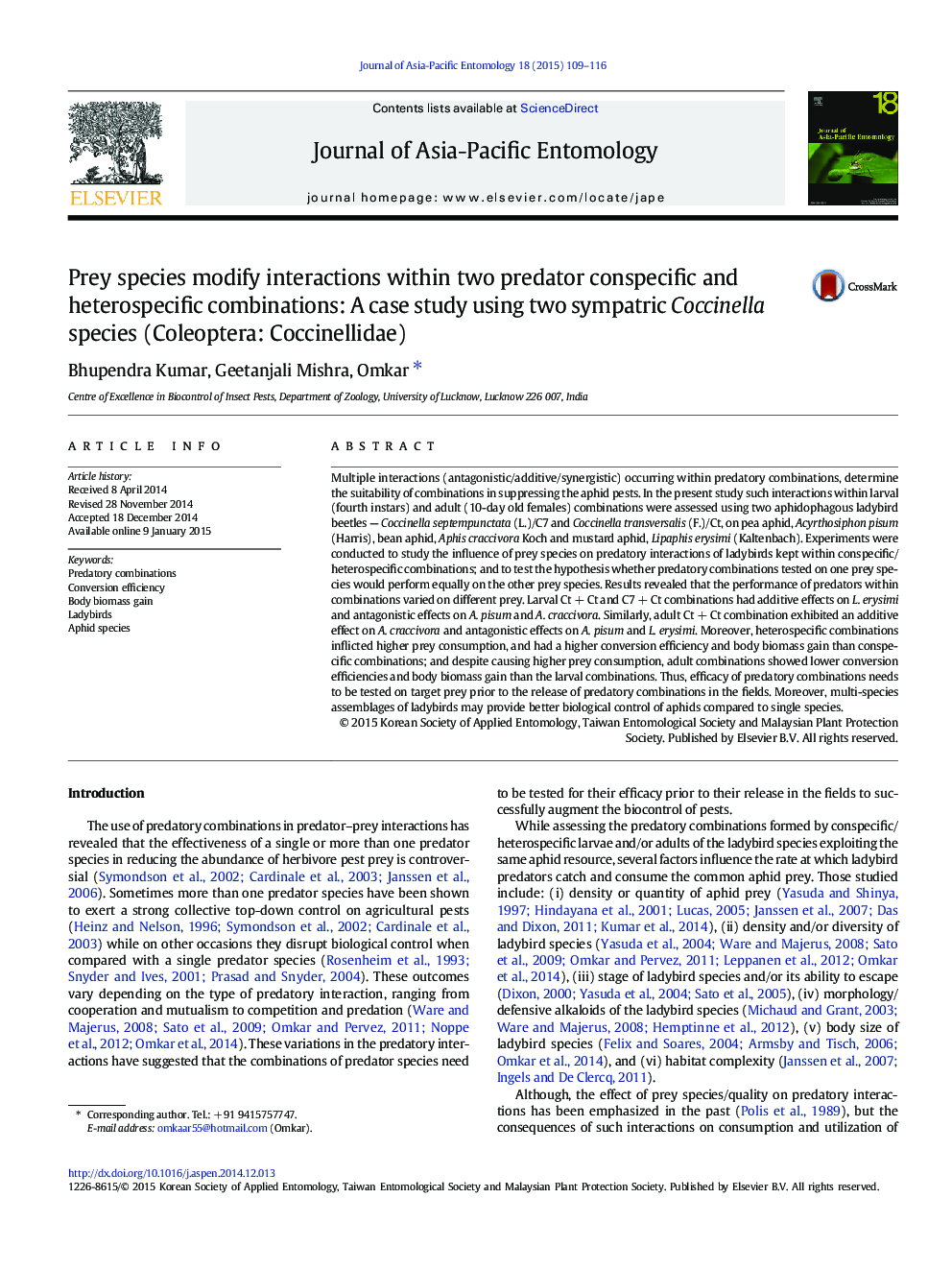| کد مقاله | کد نشریه | سال انتشار | مقاله انگلیسی | نسخه تمام متن |
|---|---|---|---|---|
| 4524450 | 1323579 | 2015 | 8 صفحه PDF | دانلود رایگان |

• Performance of ladybirds within predatory combinations varied on different prey.
• Adult females had higher prey consumption but poor prey utilization than larvae.
• Prey consumption and utilization were maximum within multi-species combinations.
• Combinations need to be tested on target prey prior to their release in fields.
Multiple interactions (antagonistic/additive/synergistic) occurring within predatory combinations, determine the suitability of combinations in suppressing the aphid pests. In the present study such interactions within larval (fourth instars) and adult (10-day old females) combinations were assessed using two aphidophagous ladybird beetles — Coccinella septempunctata (L.)/C7 and Coccinella transversalis (F.)/Ct, on pea aphid, Acyrthosiphon pisum (Harris), bean aphid, Aphis craccivora Koch and mustard aphid, Lipaphis erysimi (Kaltenbach). Experiments were conducted to study the influence of prey species on predatory interactions of ladybirds kept within conspecific/heterospecific combinations; and to test the hypothesis whether predatory combinations tested on one prey species would perform equally on the other prey species. Results revealed that the performance of predators within combinations varied on different prey. Larval Ct + Ct and C7 + Ct combinations had additive effects on L. erysimi and antagonistic effects on A. pisum and A. craccivora. Similarly, adult Ct + Ct combination exhibited an additive effect on A. craccivora and antagonistic effects on A. pisum and L. erysimi. Moreover, heterospecific combinations inflicted higher prey consumption, and had a higher conversion efficiency and body biomass gain than conspecific combinations; and despite causing higher prey consumption, adult combinations showed lower conversion efficiencies and body biomass gain than the larval combinations. Thus, efficacy of predatory combinations needs to be tested on target prey prior to the release of predatory combinations in the fields. Moreover, multi-species assemblages of ladybirds may provide better biological control of aphids compared to single species.
Figure optionsDownload as PowerPoint slide
Journal: Journal of Asia-Pacific Entomology - Volume 18, Issue 2, June 2015, Pages 109–116